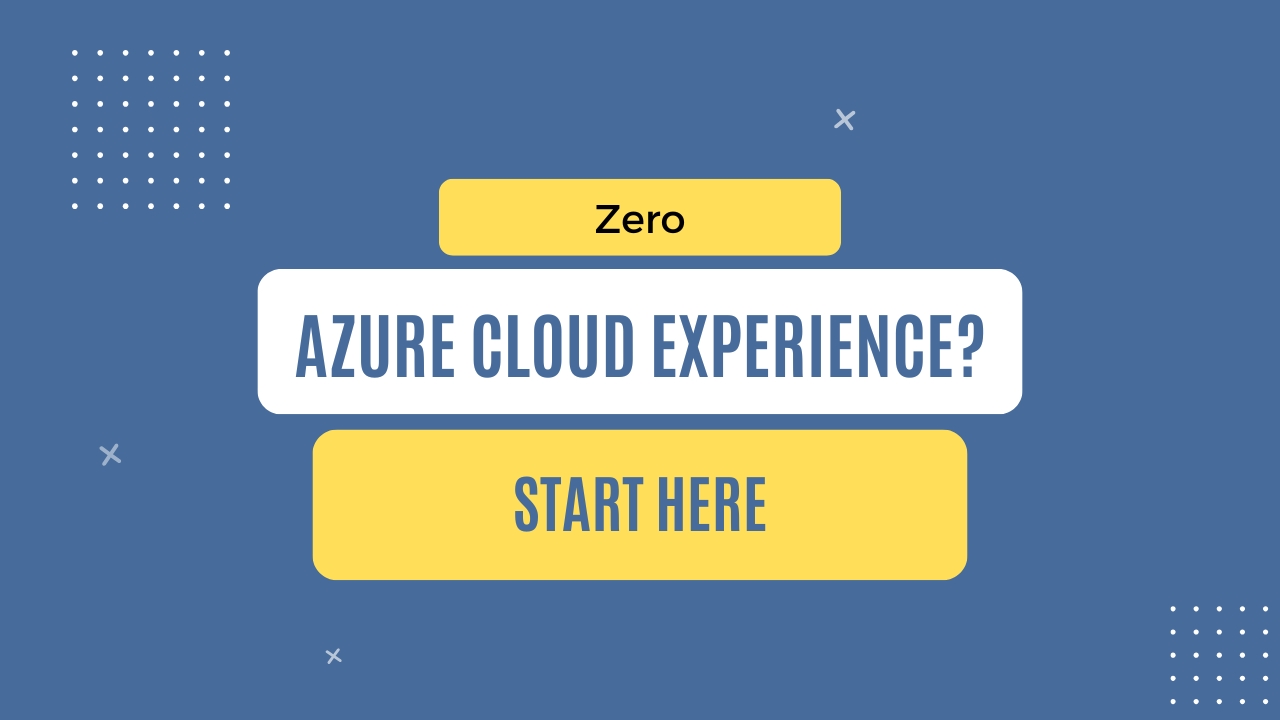Published
- 4 min read
Zero Azure cloud experience? Start here

If you want to learn Azure to progress your career, it can feel overwhelming.
With 200+ services, where do you even begin?
But don’t worry.
- You don’t need to learn everything on day one.
- You won’t be using the majority of them anyway.
That’s why in this post I want to focus on JUST 5 you need to start with.
Once you nail these 5, you can add a few more if necessary.
1. Azure Virtual Machines - Your own cloud computer
What is it:
It’s an on-demand, scalable cloud server. Think about it as a server machine you rent in Microsoft’s data center. You get to pick the OS (Windows, Linux), and you’re in complete control of that environment.
Why do you need to learn it:
Since you have full control over the virtual machine, what you can put is flexible. Maybe it’s a custom software configuration. But maybe it’s to host the legacy application. Many enterprises still rely on lift-and-shift migrations, meaning VMs will stick around for years.
Use it when:
- Hosting legacy applications
- Running custom software that needs complete control
- Setting up development/testing environments
Free tier:
Not really (except within the Azure Free Account). But you can reduce costs by picking a cheaper instance and shutting it down when not in use.
2. Azure Functions – Serverless on demand
What is it:
A cloud-based, event-driven compute service. It runs your code without needing to manage servers. Think of it as a backend that wakes up when needed, runs some code, and then shuts down.
Why do you need to learn it:
Because not every app needs a full-blown backend. Functions are a great pick for background jobs, and event-driven workflows. Plus, you only pay for the actual execution time, so it’s cost-efficient.
Use it when:
- Processing files (e.g., resizing images on upload)
- Running scheduled or background jobs (e.g., sending daily reports)
- Handling real-time events (e.g., responding to database updates)
Free tier:
Yes! 1 million executions per month for free.
3. Azure Storage Account - Put your files here
What is it:
A cloud-based storage solution for all kinds of data. Images, files, logs, and more.
Why do you need to learn it:
Because every app needs storage. Whether you’re saving user documents, images, or logging events, Azure Storage Account is the go-to service.
Use it when:
- Storing images, videos, or documents
- Hosting static websites (yes, you can do that!)
- Keeping logs and backups
Free tier:
5GB of blob storage as part of Azure Free Account benefits. But there are limits and after the 12-month free period, any services you continue to use will be billed at standard rates. Other than that, the pricing starts at $0.15 per GB per month (+ some extra cents for read-write operations).
4. Azure App Service - For deploying your web apps
What is it:
A fully managed hosting platform for web apps and APIs. Just push your code, and Azure handles scaling, patching, and load balancing.
Why do you need to learn it:
Because it’s a great way to deploy web apps without worrying about servers.
Use it when:
- Hosting websites or APIs
- Deploying apps quickly with minimal ops work
- Auto-scaling apps to handle traffic spikes
Free tier:
There is a free plan that allows: 60 CPU minutes/day, 1 GB of RAM, 1 GB of storage. A great option if you want to explore and learn the service.
5. Azure SQL Database – Fully Managed Relational Database
What is it:
A fully managed cloud database service based on SQL Server. No need to install or manage anything. Just focus on your data.
Why do you need to learn it:
Because most business applications need a database, and Azure SQL gives you one without worrying about patches, backups, or scaling.
Use it when:
- You need a relational database in the cloud
- You want high availability
- You prefer SQL Server but don’t want to manage it
Free tier:
There is a free tier with a monthly allowance of 100,000 vCore seconds of compute, 32 GB of data storage, and 32 GB of backup storage, free for the lifetime of your subscription. This means you get a little over 27 hours each month, but since it auto-pauses when unused, it’s 27 hours of activity. This could be an excellent option for learning projects. Also, you can pick what to do after the limit is exceeded: auto-pause or continue to use it and get billed.
Don’t try to learn 50 services at once.
Pick these 5.
Go all in.
Move on to other services when needed.
Every Friday I share actionable .NET advice, insights, and tips to learn the latest .NET concepts, frameworks, and libraries inside my FREE newsletter.
Join here 11,000+ other developers